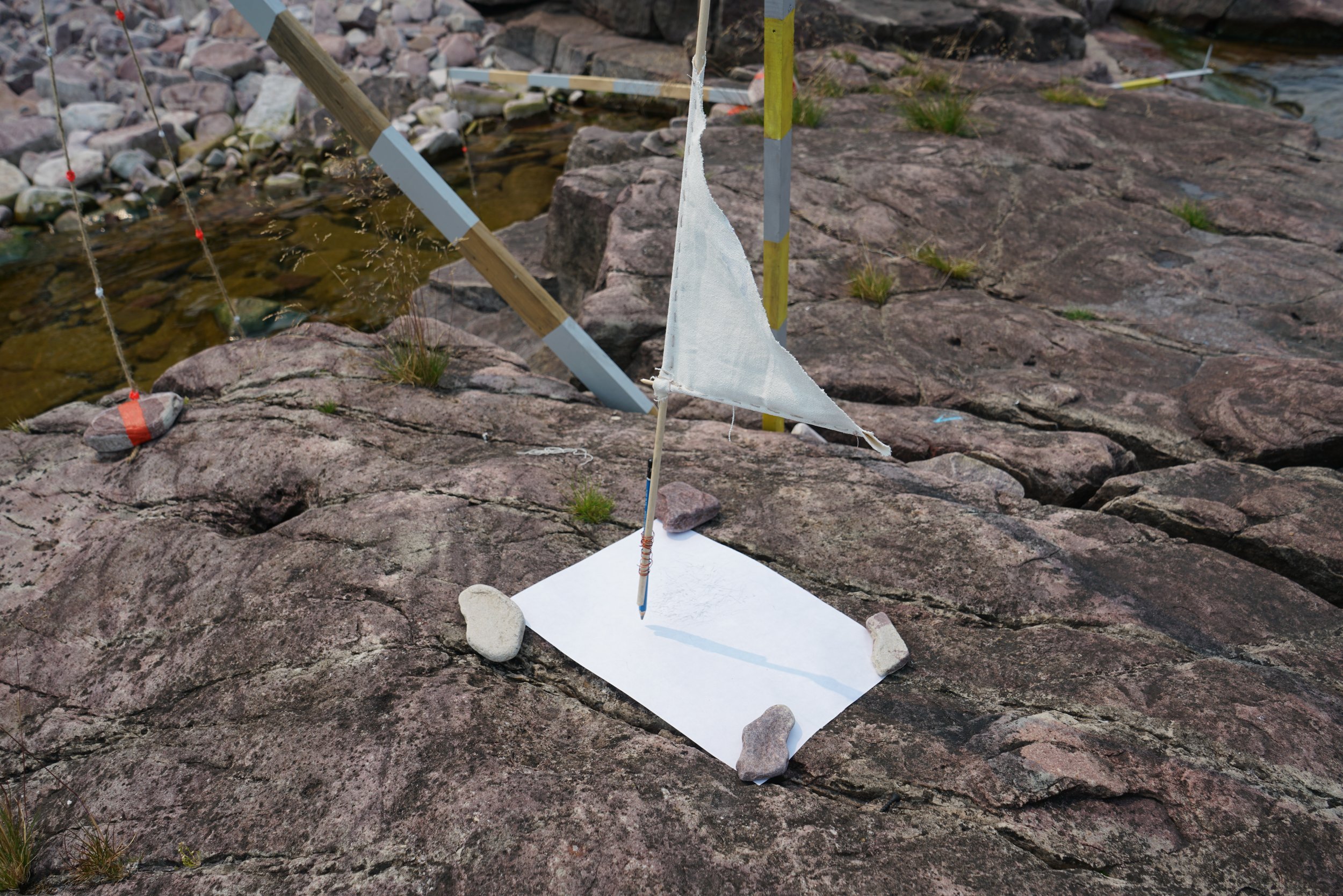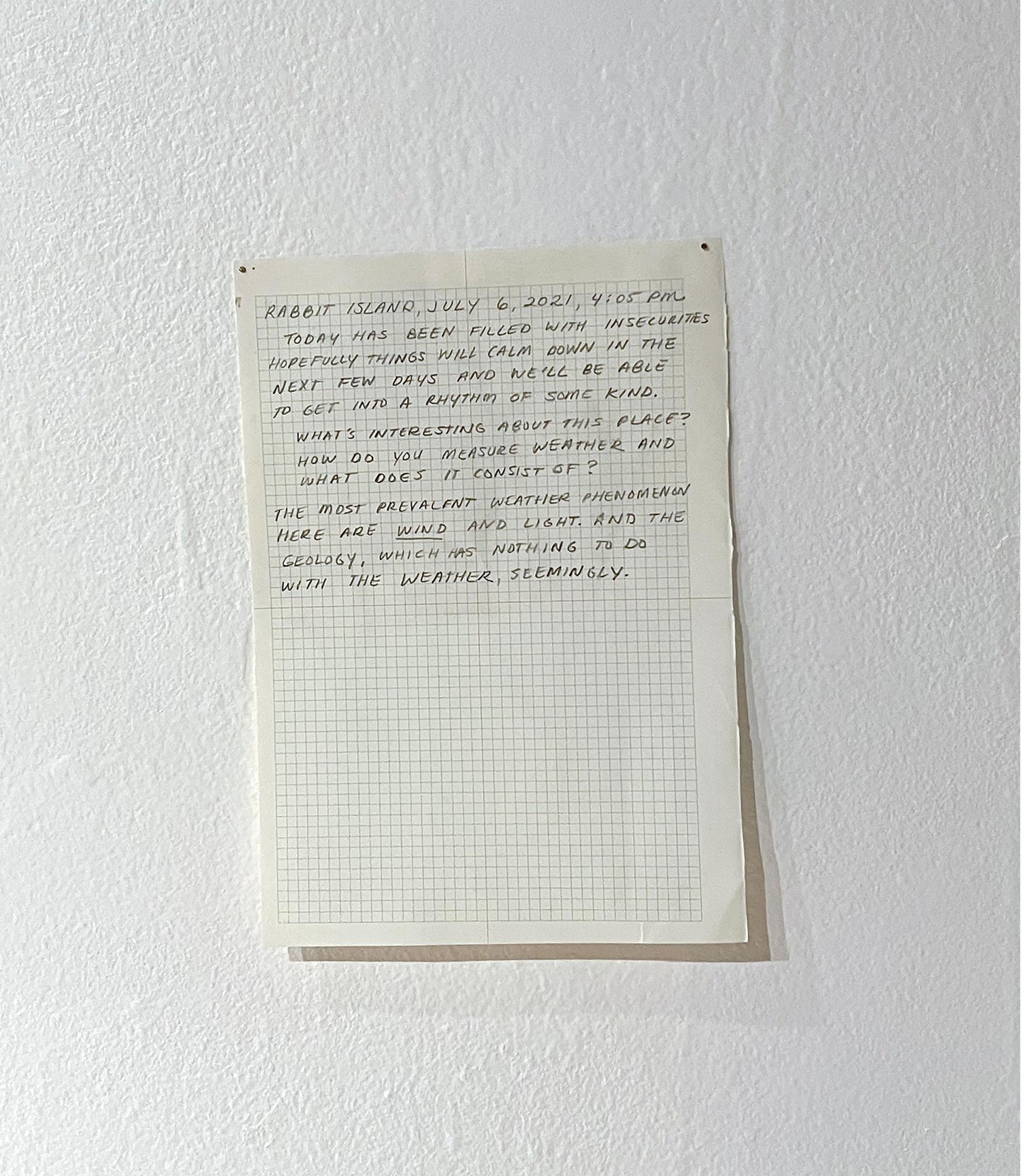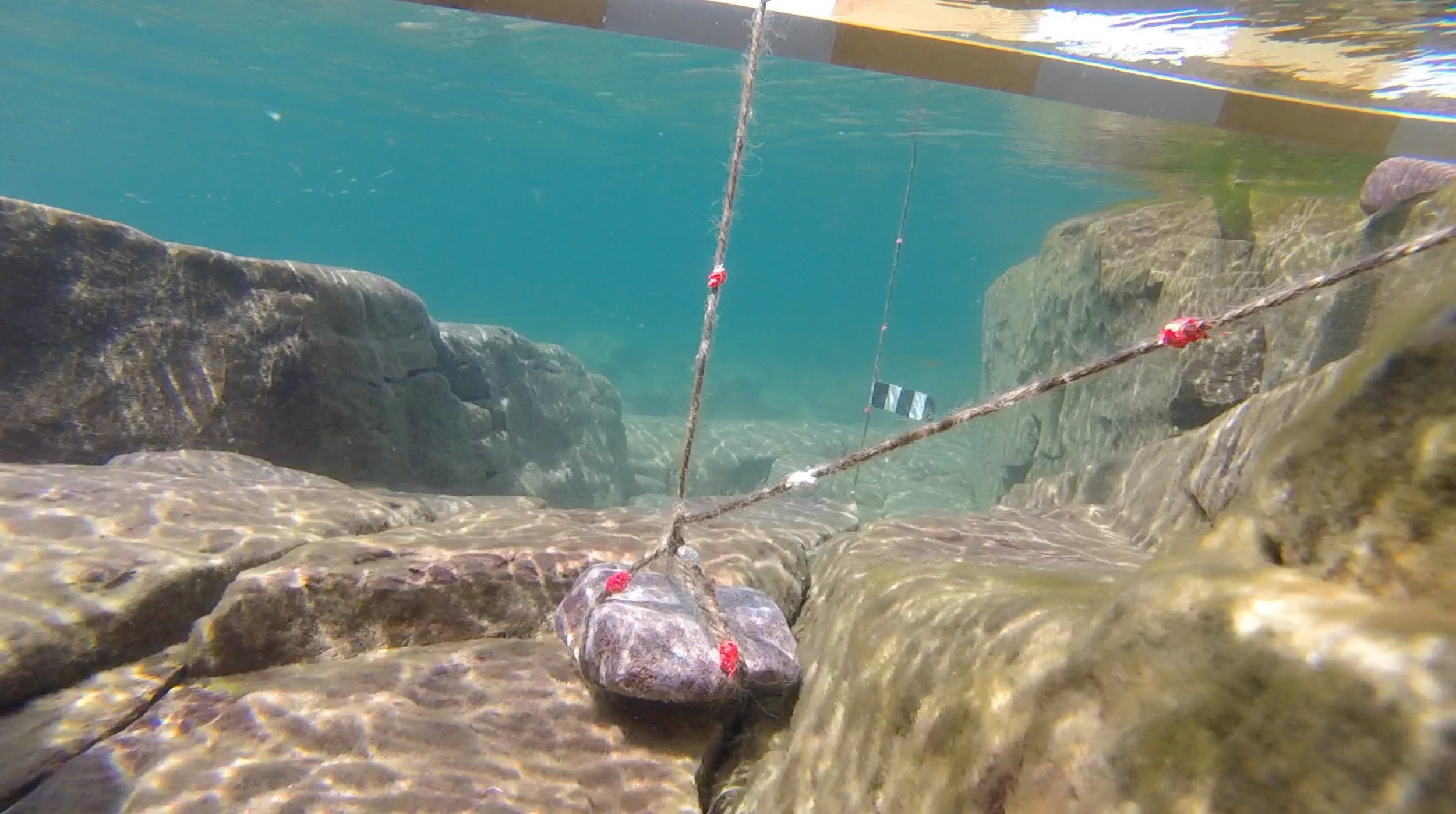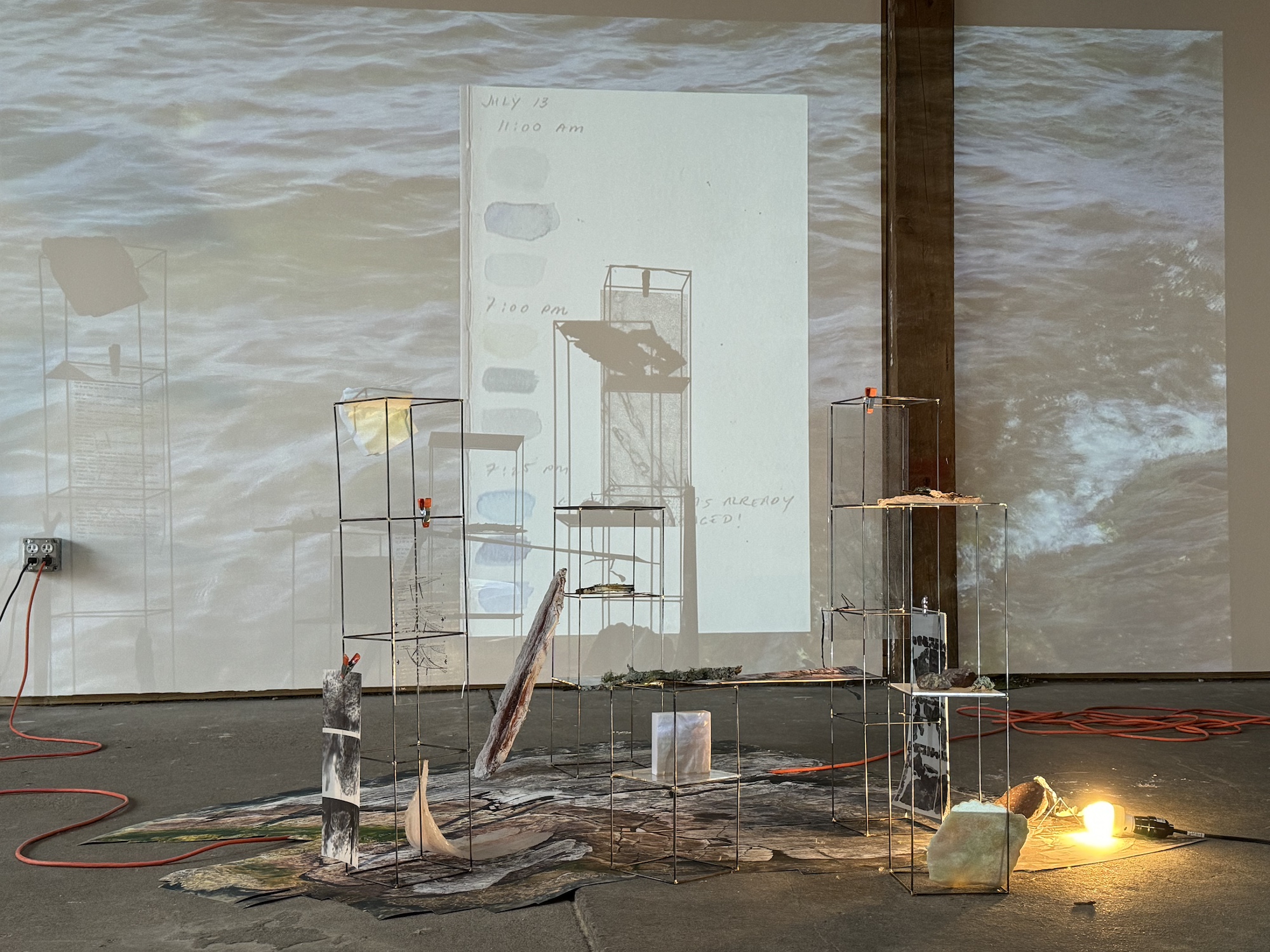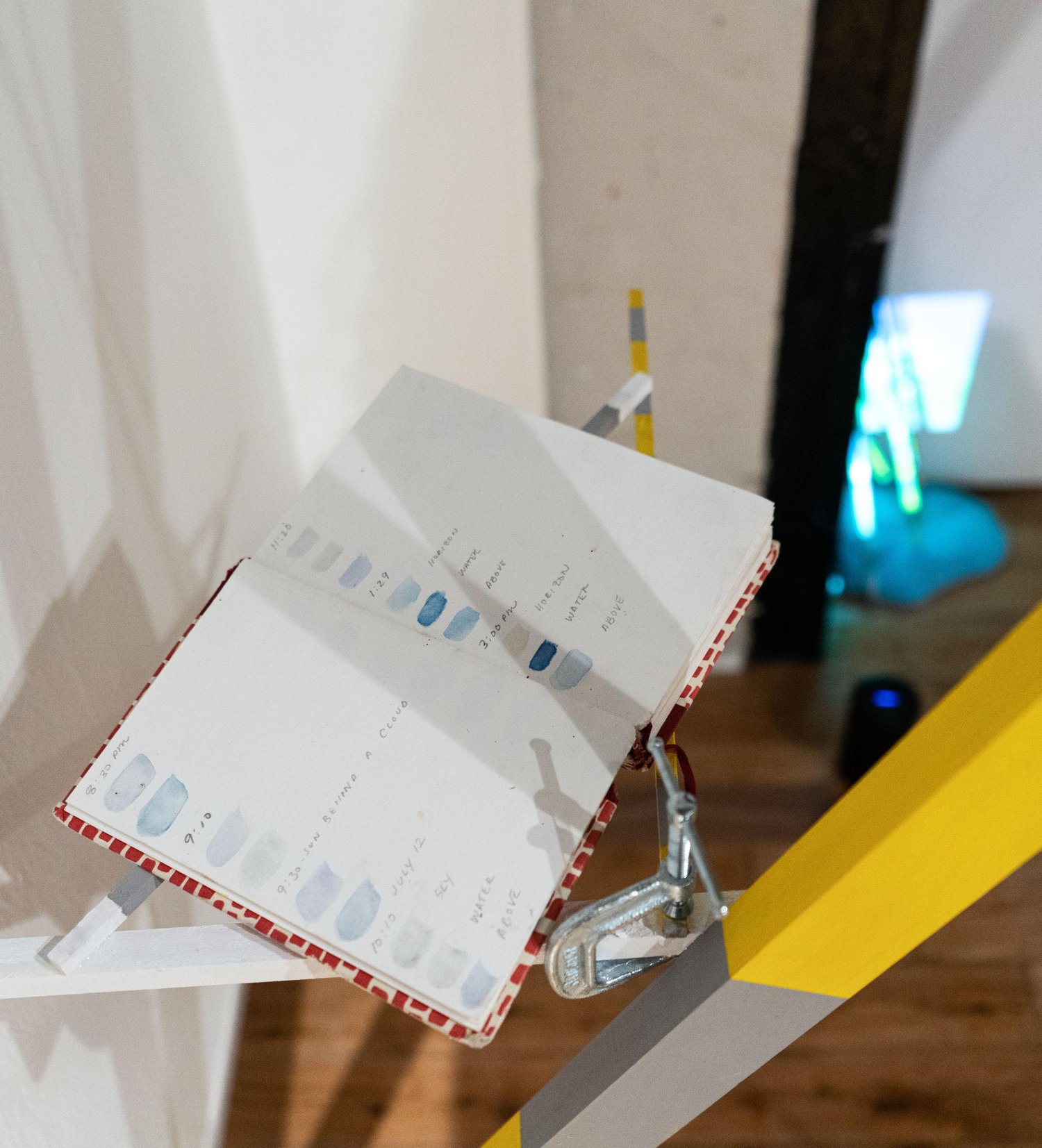Keweenaw Observing Station
Aly Ogasian + Claudia O'Steen
Rabbit Island is a 91-acre remote bit of land in Lake Superior — the largest volume of fresh water in the world — four miles east of Michigan’s Keweenaw Peninsula within the traditional territory of the Anishinaabe. The area has never been developed, and a conservation easement ensures that its native ecosystem remains undisturbed.
The island is also located adjacent to the Midcontinent Rift System, a 1,200-mile-long geological rift in the center of North America that formed over a billion years ago when the continent began to split apart. While the split never completed, the rift “left behind geologic evidence that points to the a long history of environmental change within the region,” say artists Aly Ogasian and Claudia O’Steen, who participated in a collaborative residency on Rabbit Island in 2021.
The residency program, supported by The Rabbit Island Foundation, connects contemporary art, science, and conservation. During their stay, Ogasian and O’Steen began an ongoing project called Keweenaw Observing Station, comprising a series of site-responsive, portable sculptures that function as observational stations, instrumentation, and an information repository.
“The work posits that far from being static, geology is a dynamic, living entity that continues to shape and be shaped by changing climate,” the artists say. “The project touches upon the lake as a ‘site of memory’ by examining how winter conditions contribute to subsequent summers, while also engaging human memory by exploring local and Indigenous observations of the landscape.”
Keweenaw Observing Station draws on local monitoring systems used by the National Oceanic and Atmosphere Administration (NOAA), like the Great Lakes Water Levels Monitoring Network. The artists merge scientific data with human insight into changes over time, in addition to conceptualizing the future of the lake. The artists say, “The instruments poetically measure wind, waves, visibility, water level, and temperature, exploring both the possibilities and limitations afforded by perceptual observation.”
Find more:
alysonogasian.com claudiaosteen.com


